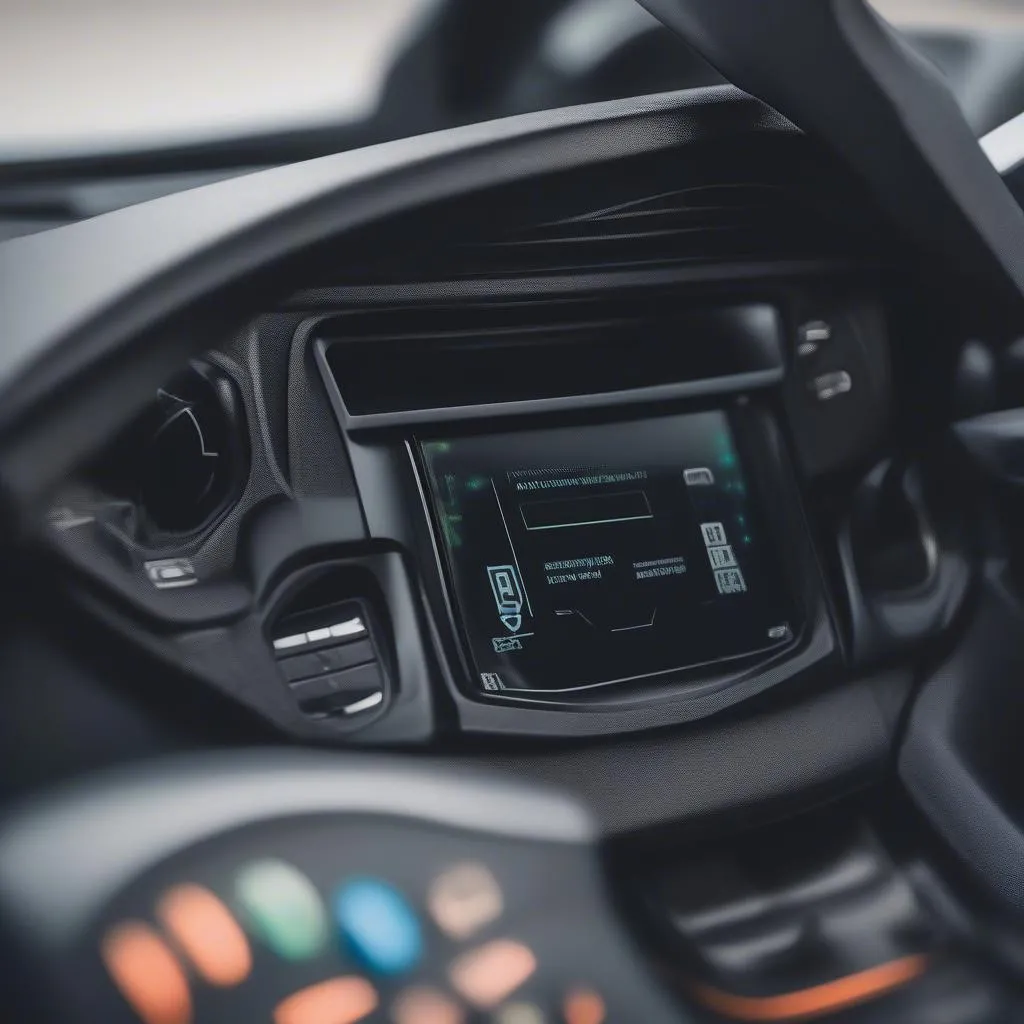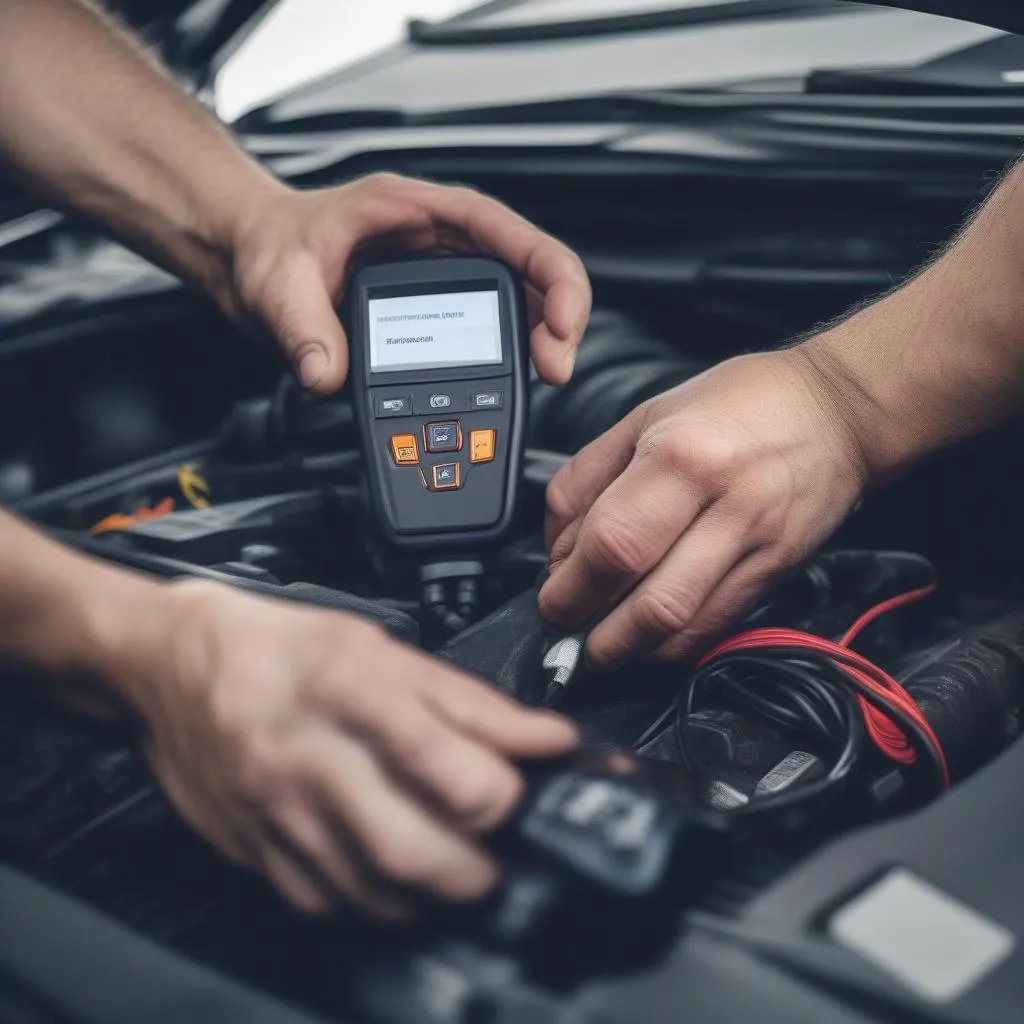Have you ever wondered how mechanics figure out what’s wrong with your car? Like, how do they know if it’s a minor hiccup or a major engine meltdown? Enter the world of OBD and OBD2, the unsung heroes of car repair. These systems have revolutionized vehicle diagnostics, and their story is a fascinating journey through automotive history.
What is OBD and Why Should I Care?
Before we dive into the history books, let’s understand what OBD (On-Board Diagnostics) actually means. Imagine it as your car’s own internal doctor. OBD systems monitor various components and systems within your vehicle, constantly checking for any issues. If something seems off, they store a trouble code in the car’s computer.
“OBD is like having a direct line to your car’s brain,” says automotive expert Dr. Emily Carter, author of “The Complete Guide to Modern Car Repair.” “It allows mechanics to access vital information about your car’s health, making diagnosis faster and more accurate.”
The Early Days: OBD Takes its First Steps
The story of OBD dates back to the 1960s, with car manufacturers experimenting with rudimentary systems to monitor engine performance. However, these early systems were limited and varied greatly between makes and models.
Then came the 1980s, a pivotal decade for automotive technology. The California Air Resources Board (CARB) stepped in, driven by a need to control vehicle emissions and improve air quality. They mandated that all vehicles sold in California from 1988 onwards be equipped with a standardized system for monitoring emission control components. This was the birth of OBD as we know it.
OBD2: A Universal Language for Cars
While the initial OBD system was a step in the right direction, it wasn’t perfect. Different manufacturers still used their own protocols and connectors, creating a headache for mechanics. This is where OBD2 comes in.
Introduced in the mid-1990s, OBD2 brought standardization to the forefront. It mandated a universal 16-pin connector (that familiar port under your dashboard) and standardized diagnostic trouble codes (DTCs). This meant that mechanics could now use the same tools and procedures to diagnose vehicles from different manufacturers, revolutionizing the car repair industry.
“The introduction of OBD2 was a game-changer,” says Michael Thompson, a seasoned mechanic with over 20 years of experience at a dealership in Chicago. “It streamlined the diagnostic process, saving us time and allowing us to provide more efficient service to our customers.”
How OBD and OBD2 Benefit You as a Car Owner
You might be thinking, “This is all well and good, but how does it affect me?” Well, OBD and OBD2 offer several benefits to car owners:
- Faster and more accurate diagnostics: Gone are the days of mechanics relying solely on intuition and experience. OBD2 provides concrete data, pinpointing issues quickly and accurately.
- Lower repair costs: Faster diagnosis means less time spent troubleshooting, ultimately saving you money on labor costs.
- Increased transparency: With OBD2, you’re no longer in the dark about your car’s health. You can purchase your own affordable OBD2 scanner and get a basic understanding of what’s going on under the hood.
- Improved safety: By detecting issues early on, OBD2 helps prevent potential breakdowns and keeps you safer on the road.
Beyond Diagnostics: The Future of OBD
OBD2 has come a long way since its inception, and the future holds even more exciting possibilities. With advancements in technology, we can expect to see:
- Real-time vehicle monitoring: Imagine receiving alerts about potential issues even before the check engine light comes on.
- Predictive maintenance: OBD data, combined with artificial intelligence, could predict component failures, allowing for proactive maintenance and preventing costly repairs down the line.
- Integration with other technologies: OBD2 could seamlessly integrate with smartphone apps, providing drivers with real-time data on fuel efficiency, driving habits, and more.
 Car dashboard with OBD2 port
Car dashboard with OBD2 port
Common Questions about OBD and OBD2
Here are answers to some frequently asked questions:
What does the check engine light mean?
The check engine light is a signal from your car’s OBD system that something isn’t quite right. It could be anything from a loose gas cap to a more serious engine problem. It’s best to get it checked out by a mechanic using an OBD2 scanner to determine the exact cause.
Can I use any OBD2 scanner on my car?
While most OBD2 scanners work on a wide range of vehicles, some are specifically designed for certain makes and models. It’s always a good idea to check compatibility before purchasing one.
What is a DTC code?
DTC stands for Diagnostic Trouble Code. These are standardized codes stored in your car’s computer when the OBD system detects an issue. Each code corresponds to a specific problem, helping mechanics pinpoint the root cause.
Can I reset my check engine light myself?
Yes, you can purchase an OBD2 scanner that allows you to reset the check engine light. However, keep in mind that this only clears the code and doesn’t actually fix the underlying problem.
 Mechanic plugging in an OBD2 scanner to a car
Mechanic plugging in an OBD2 scanner to a car
Need Help with Your Car’s Diagnostics?
Understanding your car’s OBD system can seem daunting, but it doesn’t have to be. At Tech Car USA, we’re here to help you navigate the world of car diagnostics.
For expert assistance with your car’s OBD system or for help installing diagnostic software, contact us on Whatsapp at +84767531508. Our team of automotive specialists is available 24/7 to answer your questions and provide guidance.
Looking for more information on OBD2 scanners and other automotive tools? Check out our other helpful articles:
- 6 Pin OBD vs OBD2 Connector: What’s the Difference?
- ELM327 Bluetooth OBDII OBD Diagnostic Tool Scanner
From its humble beginnings to its current sophistication, OBD has revolutionized the way we diagnose and repair vehicles. As technology continues to advance, we can expect OBD systems to play an even more integral role in the future of automotive maintenance and repair.